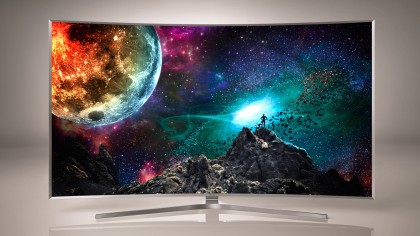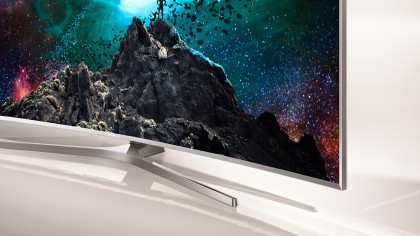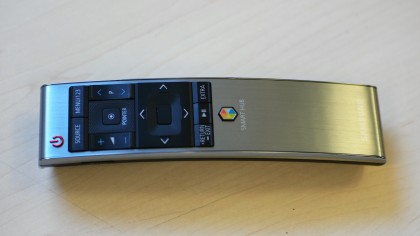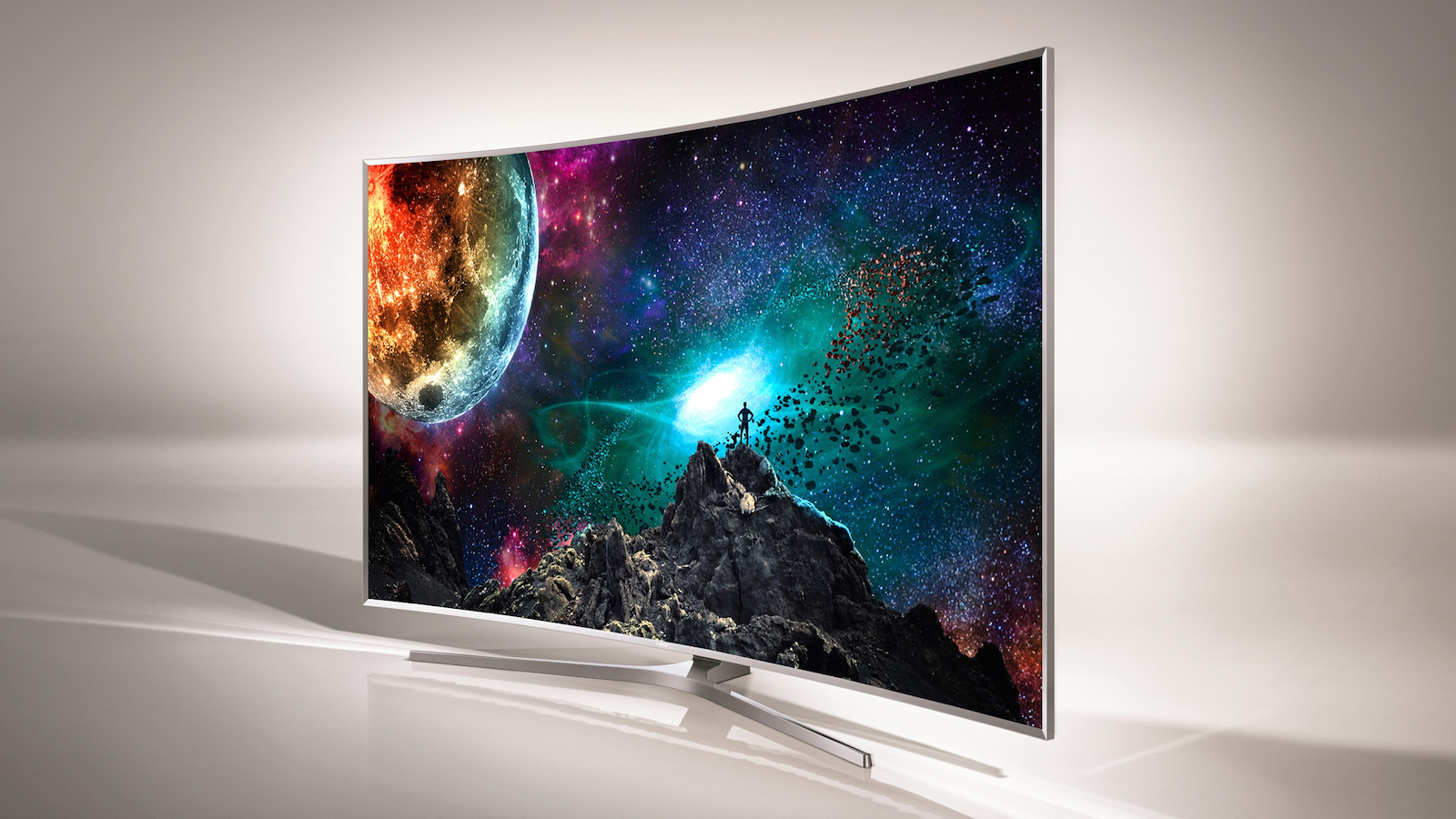Why you can trust TechRadar
While I'm still an unabashed fan of 4K UHD's effect on picture quality, after spending a week with Samsung's 65JS9500 I've become convinced that HDR actually has even more of an impact on TV picture quality.
Even on Samsung's very first HDR TV, developed without a finalised spec to work with, the combined impact of native HDR content and the advanced panel technology Samsung has developed to handle that content is just jaw-dropping, instantly taking TV picture quality to a new, cinematic level that once experienced is hard to live without.

If you're paying attention you might well be wondering where the heck I found some native HDR content given that I already stated there currently aren't any readily available HDR video sources. The answer is that the TV was supplied with a USB stick containing a UHD HDR showreel of remastered (by 20th Century Fox) clips from two movies: The Life of Pi and Exodus. And so impactful was the effect of the HDR mastering that it made all my previous TV testing experiences feel more or less drab.
The HDR difference
Even just seen cold, without running them head to head with non-HDR content on a non-HDR TV, you can clearly see where HDR is making a difference. The visible contrast range, especially with Exodus's highly stylised, heavily filtered images, is unlike anything I've seen before from an LCD TV. Or actually, any TV.
This is because the enormous luminance range in the HDR content is delivered so effectively by the high-brightness, locally dimmed LED light engine of the TV. Incredibly inky blacks are able to sit side by side with phenomenally potent, crisp, pure whites in a way I'd just not expected would be possible with LCD technology given that it's not a self-emissive technology (where each individual pixel makes its own light) in the way that plasma and OLED are.
The luminance range between the deepest blacks and brightest whites is miles beyond anything witnessed with Rec 709 content, and gives pictures exactly the sort of ultra-dynamic, almost luminous look you get at the cinema.
HDR is not just a technology of extremes, though. It's also intended to deliver a much greater range of subtle lighting and gradation steps between those stark black and white 'end points'. This means on the 65JS9500 that you get to see a much wider colour range, much greater colour finesse and accuracy in dark parts of the image. You also get markedly more shadow detail that in turn gives dark scenes a more natural feeling of depth.
In other words, HDR isn't just a high impact technology, though it certainly is that. When connected with panel technology and processing as strong as those of the 65JS9500 it's also a technology that does a beautiful job of bringing to the screen more of the smaller things that traditional TVs just cannot reach.
HDR goes head to head
Just how much of an impact watching native HDR content on the 65JS9500 has becomes more defined if you compare the native HDR content directly, head to head, with the 'normal' UHD Life of Pi transfer contained on Samsung's 2014 UHD Video Pack.
Even if you watch this non-HDR transfer on the 65JS9500 the difference in contrast and colour saturation between it and the HDR clips of the same film is far greater and more impressive than I'd expected - especially this relatively early in the HDR game.
Don't start thinking that the 65JS9500 will only be worth its high price of entry when there's a decent stock of native HDR content in town, though. While native HDR content clearly looks in a different league to non-HDR content on the 65JS9500, non-HDR content also clearly looks much brighter, more colourful and more nuanced on the 65JS9500 than it does on a non-HDR screen.
The processing the 65JS9500 uses to upshift non-HDR content to take advantage of its HDR panel design works startlingly well for the most part. It adds colour range without leaving the results looking unbalanced or artificial, and expands the luminance range without (usually) leaving bright areas looking over-exposed or dark areas looking forced and hollowed out.
Rec 709 also supported - if you really want it
I guess some enthusiasts might take umbrage at the idea of having their non-HDR content expanded from the limited range it was mastered in. But while there is actually an option on Samsung's TV to limit its picture playback to the Rec 709 picture standard, I'd urge everyone to at least experiment with the rather confusingly named native colour setting that delivers an upconverted experience. Once I'd tried it I seldom if ever felt inclined to turn it off again.
Given how much new technology and processing Samsung has had to develop to make the 65JS9500's HDR talents tick, its engineers might have been forgiven for not really doing much work on UHD side of things. But actually, with Samsung's new Octa Core processing system running the show, the 65JS9500 delivers some clear UHD advances.
Native UHD content looks slightly more nuanced thanks to the screen's extra colour resolution and a welcome reduction in the amount of noise in UHD images, especially the blue ringing effect commonly seen on previous Samsung LCD TVs. Also, the upscaling of HD to the screen's UHD resolution is a revelation, especially in the way it now does a much more astute job of handling source noise and grain when calculating how best to add all the millions of extra pixels required by an HD to UHD conversion.
Reinvigorated 3D
Although 3D seems to have lost its lustre of late, the 65JS9500 is good enough in 3D mode to put the ailing format back on the map. The panel's extreme brightness proves a great foil for the dimness usually associated with the active 3D technology Samsung always uses. Colours, too, look phenomenally intense, which helps 3D images enjoy an enhanced sense of solidity and object depth.
Detail levels are exceptional as well, thanks to the way the active 3D technology upscales HD 3D Blu-rays to UHD. I was also relieved to see that the intense sharpness isn't reduced much at all by the crosstalk ghosting noise that can be active 3D's nemesis.
The only issue with 3D, really, is that motion can look a little juddery without using the provided motion processing. If you do use the processing, images can exhibit signs of unwanted processing side effects.
For all their goalpost-shifting brilliance, the gentle 3D judder isn't the only flaw in the 65JS9500's pictures.
Occasionally the brightest parts of non-HDR content can look a little clipped and short of detail, and similarly the darkest parts of non-HDR content can start to look a little empty, especially if you've opted to rein in the backlight (something I'd recommend you only do very slightly) for dark room viewing.
While colours are mostly upscaled to HDR extremely well, meanwhile, some red and orange tones can sometimes feel a bit too pushed versus the rest of the palette.
Viewing angle issues
If you have to watch the TV from down its sides, you may find the curved screen disrupting the image geometry, and you will also occasionally see signs of light blooming (from the rear LED lighting) around very bright objects that don't appear when viewing directly from the front.
The curve also causes a separate issue in the shape of exaggerated, distorted reflections of any strong light sources you might have in your room. However, these distortions are relatively suppressed versus last year's curved Samsung TVs, especially when you take into account the extra brightness coming out of the screen.

I should add, too, that while I remain no fan of curved screens on TVs smaller than 65-inches, I don't mind the curve on large screens like the one under scrutiny here, especially if your TV is going into a corner of your room. Also, Samsung's improved depth enhancement process does a much cleverer, more accurate job of mapping the sense of image depth to the curve than it did last year.
The 65JS9500's imperfections are, though, only tiny blots on what is by any standards a bravura picture performance. A performance that takes the domestic television to a whole new level. It finally takes LCD beyond where plasma could likely ever have got and sets a frighteningly high benchmark for the other brands to follow.
Usability
After the fiddly smart remote control and rather long-winded and sometimes inscrutable onscreen menus seen with the past couple of Samsung TVs generations, the new handset and GUI mark a welcome step forward.
The remote control moves away from last year's mistake of trying to put too many control options into too small an area, this time keeping the 'standard' navigation buttons separate to the point-and-click system. So now it feels like a proper choice as to which control system you use, rather than it always feeling like one option just gets in the way of the other.

It's more straightforward, too, to get to the full set up menus if you want them, and the touch-response of the point and click activation button works excellently.
The only complaint about the remote is that the on-screen cursor position doesn't always match the place on the screen you feel like you're pointing at.
The new smart GUI makes it much easier to quickly access most-used, most-watched content than Samsung's previous smart efforts, as well as now overlaying most menus over a small area of the TV picture rather than them taking over the majority of the screen as was the case previously. They're much more intuitive and slick to navigate too.
Sound
The 65JS9500 is a perfectly decent audio performer. It can go loud and spread its volume over a wide area without the soundstage losing cohesion, voices are both clear and credible, and treble detailing is also clean and precise without ever sounding harsh. There's more bass than you generally get with Samsung's flat TVs too.
However, this bass doesn't extend to the same depths as the best-sounding TVs around, and very dense soundtracks can also cause the speakers to start sounding a little distressed. In short, its sound isn't nearly as stand-out brilliant as its pictures.
Value
I actually only found out the likely price of the 65JS9500 quite late in the reviewing process, and I have to say the £5999.99 figure did knock the stuffing out of me a bit. It's a significant step up in price from Samsung's 65HU8500 last year, to say the least.
That said, at the time of writing there's simply nothing else out there that can hold a candle to the 65JS9500 in feature or picture quality terms, and the sheer wealth of innovation it delivers is beyond refute.
John has been writing about home entertainment technology for more than two decades - an especially impressive feat considering he still claims to only be 35 years old (yeah, right). In that time he’s reviewed hundreds if not thousands of TVs, projectors and speakers, and spent frankly far too long sitting by himself in a dark room.

